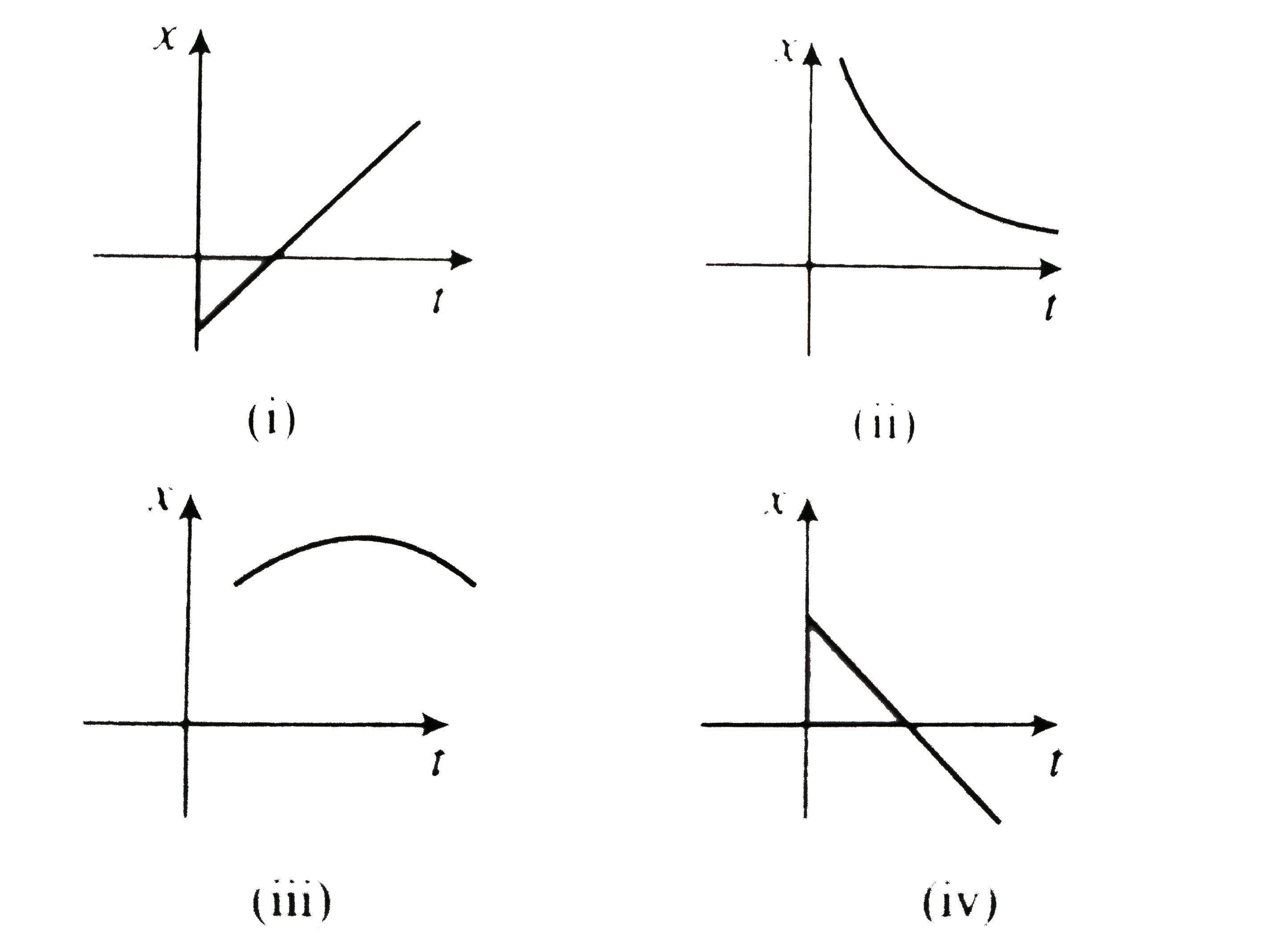Is it possible for a particle to have varying velocity but constant speed? Explain.
Step-by-Step Solution:
1. Understanding Velocity and Speed:
- Velocity is defined as a vector quantity that includes both magnitude (speed) and direction.
- Speed is the magnitude of velocity and is a scalar quantity.
2. Definition of Constant Speed:
- When we say an object has constant speed, it means that the magnitude of the velocity does not change over time.
3. Definition of Varying Velocity:
- Varying velocity means that either the magnitude (speed) or the direction (or both) of the velocity is changing over time.
4. Analyzing the Relationship:
- For a particle to have a constant speed, its speed must remain the same. However, if the direction of the velocity changes while the speed remains constant, the velocity itself is still changing because velocity is dependent on both speed and direction.
5. Conclusion:
- Therefore, it is not possible for a particle to have varying velocity while maintaining a constant speed. If the velocity is varying, it implies that either the speed is changing, the direction is changing, or both.
Final Answer:
- It is not possible for a particle to have varying velocity but constant speed.
---
- Velocity is defined as a vector quantity that includes both magnitude (speed) and direction.
- Speed is the magnitude of velocity and is a scalar quantity.
- When we say an object has constant speed, it means that the magnitude of the velocity does not change over time.
- Varying velocity means that either the magnitude (speed) or the direction (or both) of the velocity is changing over time.
- For a particle to have a constant speed, its speed must remain the same. However, if the direction of the velocity changes while the speed remains constant, the velocity itself is still changing because velocity is dependent on both speed and direction.
- Therefore, it is not possible for a particle to have varying velocity while maintaining a constant speed. If the velocity is varying, it implies that either the speed is changing, the direction is changing, or both.
- It is not possible for a particle to have varying velocity but constant speed.
Topper's Solved these Questions
- DESCRIPTION OF MOTIONBOOK - CENGAGE PHYSICSCHAPTER - DESCRIPTION OF MOTIONEXERCISE - MANDATORY EXERCISE (EXERCISE SET - II)
7 Videos
- DESCRIPTION OF MOTIONBOOK - CENGAGE PHYSICSCHAPTER - DESCRIPTION OF MOTIONEXERCISE - MANDATORY EXERCISE (EXERCISE SET - III)
12 Videos
- DESCRIPTION OF MOTIONBOOK - CENGAGE PHYSICSCHAPTER - DESCRIPTION OF MOTIONEXERCISE - OLYMPIAD AND NTSE LEVEL EXERCISE
10 Videos
- ELASTICITYBOOK - CENGAGE PHYSICSCHAPTER - ELASTICITYEXERCISE - OLYMPIAD AND NTSE LEVEL EXERCISES
10 Videos
Similar Questions
Knowledge Check
A particle is travelling with a constant speed. This means
Aits position remains constant as time passesBIt covers equal distances in equal time intervalsCits acceleration is zeroDIt does not charge its direction of motionAssertion: If the speed of a body is constant, the body cannot have path other than a circular or straight line path.
Reason: It is not possible for a body to have a constant speed in an accelerated motion.AIf both the assertion and reason are true and reason is a true explanation of the assertion.BIf both the assertion and reason are true but the reason is not true the correct explanation of the assertion.CIf the assertion is true but reason falseDIf both the assertion and reason are false.Study the following graph:

The particle is moving with constant speed .AIn graph (i) and (iii)BIn graph (i) and (iv)CIn graph (i) and (ii)DIn graph (i)
Can a body have a constant velocity but a varying speed ?
View SolutionCan a particle accelerate if its speed is constant ? Can it accelerate if its velocity is constant ? Explain.
View SolutionA particle is moving in a circle with a constant speed. Its moving is
View Solutionthe circular motion of a particle with constant speed is
View SolutionAssertion:− A particle having zero acceleration must have constant speed.
Reason :− A Particle having constant speed must have zero acceleration.
View Solution